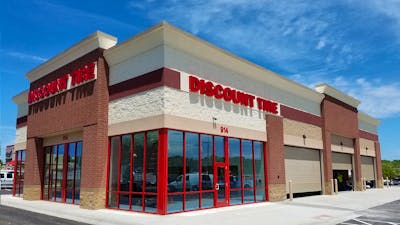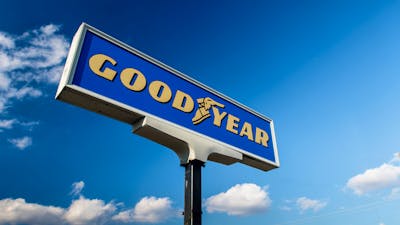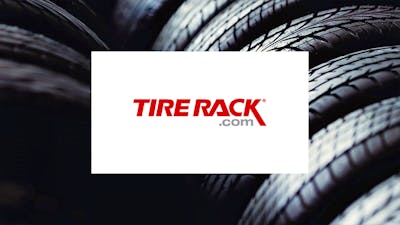Best Tires for the Jeep Wrangler
Trying to decide on the best tires for your Jeep Wrangler is a tough decision. The best tires for you depends completely on how you drive, where you drive, and what you need as a Jeep Wrangler owner. The tires that came with your Wrangler will depend on the model, but most of the choices that Jeep made for the factory-equipped tires (original equipment, OE) were aimed towards striking a good balance between ride quality, capability, fuel economy, and cost.
Get the Best Deals on Tires
That balance may not match what you’d prefer or need for your Wrangler and how you use it. Car Talk can help you find the best option for your situation to fit your Jeep Wrangler.
Have an older Jeep Wrangler? See tire sizes for previous years.
Best Tires for the Jeep Wrangler Sport:
- Bridgestone Dueler H/T 685 - Best budget tire
- Hankook Dynapro AT2 - Best mid-priced tire
- Goodyear Wrangler All-Terrain Adventure w/ Kevlar - Best superior tire
Best Tires for the Jeep Wrangler Sahara:
- Fuzion SUV Highway All-Season - Best budget tire
- Hankook Dynapro AT - Best mid-priced tire
- Goodyear Wrangler Duratrac On/Off-Road Commercial - Best superior tire
Best Tires for the Jeep Wrangler Rubicon, Rubicon 392:
- Kumho Road Venture AT51 - Best budget tire
- BFGoodrich All-Terrain T/A K02 - Best mid-priced tire
- BFGoodrich Mud-Terrain T/A KM3 - Best superior tire
Buy Tires Online and Save
Great prices, wide selection and unmatched convenience
Original Equipment Wrangler Tires
Wondering what tires came standard on your Jeep Wrangler? The current-generation Wrangler has several trim levels with both 17-inch and 18-inch wheels. The following are the factory-installed tires for the Wrangler:
- The Sport trim comes with 17-inch wheels with tires sized 245/75R17. The original equipment tires are Michelin LTX M/S2, Bridgestone Dueler A/T RH-S or H/T 685, or Goodyear Wrangler All-Terrain Adventure with Kevlar. Which tire depends on sub-trim and options choices for the Wrangler Sport model.
- The Sahara trim comes with 18-inch wheels that take a 255/70R18 tire. Original equipment includes Goodyear Wrangler All-Terrain Adventure with Kevlar, Bridgestone Dueler A/T RH-S, or Bridgestone Dueler H/T 685. Which tire depends on options.
- The Rubicon and Rubicon 392 trims have 17-inch wheels and BFGoodrich K02 All-Terrain tires sized at LT285/70R17.
- The Rubicon 392 is available with 17-inch wheels clad with BFGoodrich K02 All-Terrain tires sized LT315/70R17C.
Top Replacement Tire Brands for Jeep Wrangler
Using consumer survey results from a variety of industry surveys plus expected and (when available) real-life tread wear and other metrics for tire choices, we’ve compiled a list of the go-to options for Jeep Wrangler owners. The Wrangler comes with both 17- and 18-inch wheels, depending on the model, so we’ve created lists based on both wheel sizes.
17-inch Tires for Jeep Wrangler
- Budget: Hankook Dynapro AT2 - these tires have received high consumer ratings and are a good all-around highway/light off-road option for Wrangler models that largely stay on the road.
- Moderately Priced: Kumho Road Venture AT51 -tires have good consumer feedback and are a solid choice for on-road use with occasional off-road adventure.
- Cost-No-Object: BFGoodrich All-Terrain T/A K02 - for good manners on the road and aggressive off-road capability.
18-inch Tires for Jeep Wrangler
- Budget: Hankook Dynapro AT2 - tires are long-lasting and have excellent consumer reviews. They are great highway tires.
- Moderately Priced: BFGoodrich All-Terrain T/A K02 - tires are a good on-/off-road option for those who do some of both in their Wrangler.
- Cost-No-Object: Goodyear Wrangler Duratrac On/Off-Road Commercial - for a strong mixture of on-road comfort and off-road capability. These tires receive very high consumer feedback.
When Should You Replace Tires?
The two things that affect every vehicle’s tires, no matter the make or model, are mileage and time. Mileage measures the tread life of the tire as it’s used while time measures the breakdown of the chemicals used to give the tire the properties it’s designed to have. Both should be considered when planning for replacement tires on your Jeep Wrangler.
Most tires are aimed towards having a five year lifespan in terms of time before breakdown. Given that most drivers cover around 12,500 miles per year (on average), most drivers will surpass the tread life mileage of their tire before the five year time limit is up.
Tires have a UTQG (Uniform Tire Quality Grade) rating. This rating is added by tire manufacturers as a measure of their assessment of the tire’s capabilities for treadwear, traction and temperature. The UTQG usually comes up next to the tire name as three digits and a number (eg. 500 A A) during an online search.
You can learn a little about the tire from this rating. Using our example above:
- 500 - This is the durability rating of the tire. It’s in comparison to a control tire with a tread life of 100. The grading is measured by running the tires over 7,160 miles with tread depth measurements made throughout the course. The tread wear on the tire is then compared to the control average and rated accordingly. The higher this number, the longer the expected tread life.
- A - This first letter is the Traction rating of the tire. This indicates the stopping power of the tire in wet conditions. The highest letter grade is AA, followed by A, B and C.
- A - The second letter in the UTQG is the Temperature rating. This rating indicates how well the tire withstands extreme heat. A is the highest, followed by B and C.
To give a real-world example, let’s look at the original equipment Goodyear Wrangler All-Terrain Adventure with Kevlar found on some models of the Jeep Wrangler Sahara. These have a UTQG rating of 640 A B. These have a treadwear rating of 640, a wet traction rating of A, and a heat resistance of B. So they have a tread life of about 60,000 miles, good wet stopping capability, and decent extreme heat resistance.
With wear, tire replacement usually needs to happen when the treads are too shallow to offer enough grip for the tire’s safety expectation. This can be measured in several ways, but the mileage total on the tires is a good place to start. If the tires on your Jeep no longer have well-defined tread with clear “slits” in them, it’s time to consider replacement. Most tire professionals have measuring tools to determine the amount of tread life you’ve likely got left. The less tread a tire has, the more likely it is to fail or be subject to damage.
The next consideration for tire replacement is time. Every tire sold in North America has a raised date code on its sidewall. This code can usually be found near the sizing information or tire inflation maximums. It will start with the letters DOT followed by 12 digits in three groups of four digits each. The third group of digits is the date code, read as week and year. The first two numbers are the week, the second two are the year. Thus a date code of 1820 indicates a manufacturing date in the 18th week of 2020 (April 27-May3 of 2020). The tire would thus expire five years from that point, or April 27, 2025.
Tires more than five years old are susceptible to breakdown in chemistry which will affect stopping distance, weather resistance, and more. Many tires will begin to crack or bulge under continued use after their date of expiration. This makes old tires very dangerous.
Why Not Replace with Original Equipment Tires?
The manufacturer made choices for your Jeep Wrangler that balanced fuel economy, life expectancy, road comfort, and relationships with manufacturers when choosing an OEM option for your Jeep. That balance may fit your needs perfectly, in which case there’s no reason to change which tires are on your Wrangler. Simply request OEM tires when you buy new replacements and you’re done.
Chances are, however, that your usage and needs aren’t the same as those generalized by the engineers at Jeep when choosing the OEM rubber. If you walk a different path, you’ll need different shoes. So choosing a non-OEM option might be better for you if you have budget, capability, or weather considerations you want to accommodate.
Your choice might be more aimed towards budget, safety, on- or off-road capability, or even just aesthetics. It’s your Jeep, you can make your choice for it.
Changing Wrangler Tire Sizes
The Jeep Wrangler can have several tire and wheel combinations made to it. The Wrangler is the most-modified vehicle on the road (and likely off of it), so changing tire and wheel sizes is common. If you’ve added a lift, a drop, different suspension components, or other upgrades to your Jeep, you’re probably also looking to change tire and wheel sizes to match. You’ll need to choose based on your modifications.
If most of your Jeep Wrangler’s chassis is stock, however, but you’d like to change its appearance or capability, then changing tire and wheel choices might be something you’re considering. In that case, there is one big element that must be kept in mind. Any change to the tire size from factory original must be accompanied by changes to the wheel to accommodate. And vice versa. Otherwise, the new tire/wheel combination will change the odometer and speedometer readings in the Jeep and could change clearance and safety characteristics as well.
The rule of thumb is to keep the total diameter of the tire and wheel the same. If you downsize the tire wall, you must upside the wheel to match. Conversely, any change to the wheel size must be accompanied by a change to the tire wall height.
There are advantages and disadvantages to downsizing or upsizing wheels.
With downsizing:
- Better ride quality – Smaller wheels means more rubber which means more cushion.
- Cost reduction – Tires for bigger wheels sizes can be expensive, so moving to a smaller wheel size can mean lower-cost tires.
- Seasonal changes – Smaller (standard) wheel sizes mean more options for winter and summer tire choices.
- Off-road – Smaller wheels equal larger tire walls which means more cushion off the road as well as (potentially) more grip when tire inflation changes are made.
Going up in wheel size:
- Better handling – Slimmer profiles on tires make for more solid cornering and handling characteristics.
- Better looks – Larger wheels can make a vehicle look more expensive or eye-catching.
- Better braking – Shorter profile tires often have wider tracks, which further aids handling and stopping characteristics.
See our recommendations for the Best Extended Warranty for your Jeep Wrangler
Reading Tire Sizes
The numbers and letters in a tire’s size code mean several things. Understanding them is important as each vehicle and each wheel for it have different tire size requirements. These numbers also denote important factors like the tire’s load rating, speed capability, and so forth.
Let’s look at an example. The Jeep Wrangler Sport Goodyear Wrangler Adventurer AT factory tires are sized P245/75R17:
- 245 - indicates the width of the tire from one sidewall to the other in millimeters. This tire is 245 millimeters wide.
- 75 - indicates the sidewall height as an aspect ratio (percentage) of its width. On these Firestones, the tire’s height is 75 percent of its width.
- R - means these are radial tires. Radials are the most common type of automotive tire. They have fabric woven into the treads at various angles to strengthen the shaping and load bearing of the tire.
- 17 - is the wheel diameter.
Knowing how to read the size numbers, we can look at the different types of tires available for your Jeep. There are a variety of choices for tire types:
- Touring and All-season tires - are aimed towards on-road use, especially highway use. These are comfortable, long-distance tires with moderate or good all-weather capability but only marginal off-road ability.
- Performance tires - aim towards confident handling and spirited driving capability. These tires often have little or no all-weather or off-road capability.
- All-terrain tires - are made to emphasize off-road capability while maintaining some on-road daily use comfort.
- Winter and snow tires - are just what their name implies and are best suited for seasonal use in severe climates.
Tire Sizes By Year
| Year | Trim Type | Tire Size |
|---|
Buy Tires Online and Save
Great prices, wide selection and unmatched convenience
Jeep Wrangler Tire FAQ
- How do I choose tires for my Jeep Wrangler?
Take a look at the recommendations in this story, for a start. The first step is to be honest about the kind of driving you do. It makes no sense to buy a mud terrain tire if the closest you get to the wilderness is parking in front of an Eddie Bauer store at the mall.
- What’s the biggest tire you can put on a stock Jeep Wrangler?
A 31-inch tire is about the biggest you can put on a stock Wrangler without rubbing issues. If you want to go larger than that, you’ll have to consider lifting the Jeep.
- What is the best tire pressure for my Wrangler?
Inside your driver’s side door will be a white and yellow label that will tell you the exact tire pressure recommendations for your Wrangler model. Do not use the maximum rating on the tire as your inflation point as this is the most pressure the tire is rated to handle, not the normal pressure it should have.
- How often should I rotate my Wrangler’s tires?
This depends greatly on the tires mounted on your Jeep as well as its average usage. If your Jeep is often used off-road rather than on the highway, your rotation needs will be different. Most manufacturers recommend tire rotations every 7,000 miles or so. Check with yours to be sure. If your Jeep still has its original factory tires, the owner’s manual will indicate tire rotation intervals.













